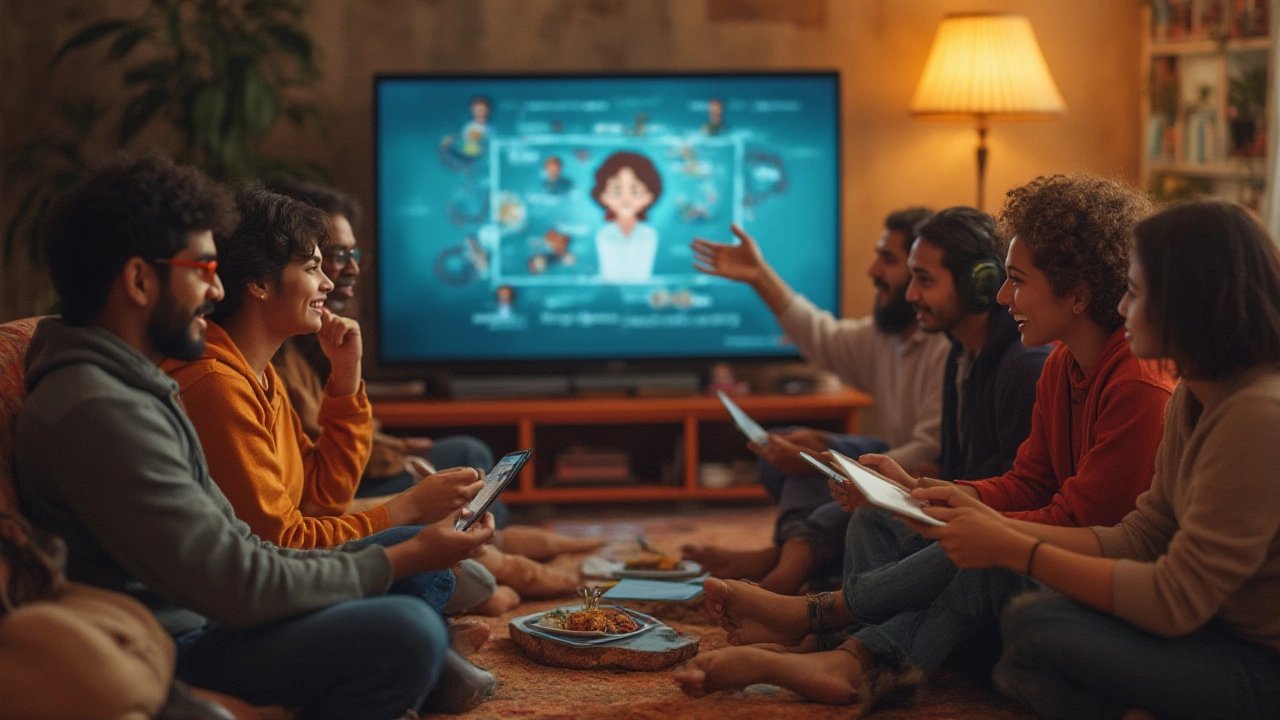You meet someone who speaks nearly perfect English — but they've never gone to class, never hired a tutor, and never traveled abroad. Their secret? YouTube. It sounds like a wild claim, but for millions, YouTube isn’t just about music videos or funny cats. It’s a global language classroom, where students from Brazil, India, Egypt, and pretty much everywhere else tune in, mimic, repeat, and surprise themselves with real progress. The question nags: Is it actually possible to learn English from YouTube — not just the odd phrase or accent, but practical, confident, life-changing skills?
The Science Behind Learning English Through YouTube
Most people assume you can’t really learn a language unless you’re in a classroom, hunched over textbooks, sweating through grammar drills. But a Stanford study from 2023 found that self-learners using videos for language practice improved nearly as much, and sometimes even more, than those in traditional courses. Why? The secret sauce seems to be immersion and repetition. Our brains soak up sounds, accents, and quirks when we hear language used in real scenes – laughing, arguing, cajoling. YouTube offers endless hours of real English, not just scripted lines. It’s raw, unpredictable, and way closer to what you’ll hear in a New York coffee shop or a London train station than in any textbook.
Unlike movies or TV, YouTube lets you pause, rewind, slow things down, and play clips again and again. That’s a blessing for learners tackling tricky pronunciations (“world,” “thought,” and “squirrel” still trip up the best of us). Popular channels for English learners — like English Addict with Mr Duncan, Rachel’s English, and BBC Learning English — now get millions of views a month. What’s interesting: research from Cambridge suggests people remember new vocabulary better when it’s attached to a person (think of the teacher’s gestures, tone, and face) than just a line on paper. YouTube teachers bring that sense of connection, even across continents.
Another plus: the power of visual context. Ever tried to pick up words just by looking at subtitles? It’s tough. But when you watch someone cook, vlog, or act out stories, you connect the dots. Visual cues make learning stickier. In fact, the University of Edinburgh reported that learners who used video-based resources scored 20% higher on listening comprehension tests than peers using audio or text alone. Add YouTube’s automatic subtitles — and you’ve got a real-time translation tool, which is priceless for tricky moments.
Of course, it’s not all sunshine. There are challenges: the sheer amount of content can get overwhelming, and not every "English teacher" on YouTube is reliable. But with some street smarts, it’s possible to find genuinely useful teachers and playlists, even tailoring your learning style down to your favorite topics — gaming, fashion, sports, tech, you name it.

How to Use YouTube for Effective English Learning
Scrolling endlessly and binging random videos is not the same as learning. The trick is to turn YouTube’s playground into your personalized classroom. Here’s what works, according to top polyglots, language coaches, and, yes, plenty of regular learners who’ve made the leap from subtitles to speaking with confidence.
- Pick Reliable Channels: Not everything with “learn English” in the title is worth your screen time. Look for channels with clear explanations, native speakers, and lots of positive feedback. English Addict, Rachel’s English, mmmEnglish, BBC Learning English, English with Lucy, and Speak English With Vanessa are good starting points. Some specialize in accents, others in grammar, slang, or pronunciation.
- Use Playlists and Series: Jumping from topic to topic is fun, but it slows progress. Find 5-10 minute videos that build on each other in a series — many channels have playlists for beginners, intermediate, and advanced learners. That structure helps you reinforce previous lessons and not just sample random words or phrases.
- Don’t Just Watch — Imitate: Pause videos often. Repeat after the speaker, copying rhythm, intonation, and facial expressions. Yes, you’ll feel silly, but you’ll also sound less robotic and more natural with time. Shadowing (imitating live as you listen) is a proven technique used by language experts.
- Switch on Subtitles (But Don’t Rely on Them): YouTube’s auto-generated subtitles help at first, but don’t get stuck reading. Try turning them off after a while — your listening skills will thank you.
- Create a Daily Routine: Consistency beats cramming. Maybe it’s 15 minutes each morning, or a playlist while you cook. Logging repeated ‘hits’ with daily English helps cement new words in your brain.
- Make Note of New Words: Don’t obsessively write down every unknown word, but jot down the ones you see repeatedly or those you find interesting. Apps like Anki or physical notebooks keep them handy for quick review later.
- Join the Conversation: Comment on videos, reply to others, or participate in community threads. Many YouTube teachers encourage written or spoken interaction via challenges or live chats. This is motivational and helps fix grammar in real-world scenarios.
- Explore Different Accents and Cultures: English on YouTube isn’t just “standard.” British, American, Australian, and even Indian or South African English all get their moment. Exposing yourself to different sounds is crucial if you want to understand real-life conversations.
Some learners even create private playlists or record themselves mimicking phrases and sentences. Listening to your own voice helps you notice mistakes — and, over time, track real progress. For those itching to push further, YouTube now offers lessons for every niche: business English, academic vocabulary, idioms for travelers, even “street English” or English for gaming nerds. Setting clear goals (“By next month, I want to order coffee without nerves” or “I’ll watch an entire sitcom episode and understand 80% of it”) keeps you motivated and focused.
Want more structure? Pair YouTube with free online exercises. Channels like BBC Learning English provide downloadable lesson plans, while YouGlish lets you hear how words are used by real people in thousands of YouTube clips, with instant playback.

Success Stories, Limitations, and Data-Driven Insights
It’s tempting to believe there’s a perfect hack, and yes — some make dazzling progress with little more than their phone and strong Wi-Fi. For proof, check comments on popular channels: you’ll find people who started from scratch and, months later, thank “Lucy” or “Vanessa” for their new jobs, test scores, or friends. Realistically, you need more than just listening and mimicking. Output — speaking and writing — is critical. A recent poll of 1,500 YouTube English self-learners (run by the ELT Research Journal) found these results:
| Study Length | % Comprehension Improvement | % Speaking Improvement | % Writing Improvement |
|---|---|---|---|
| 0-3 months | 41% | 29% | 18% |
| 4-9 months | 63% | 51% | 36% |
| 10-18 months | 75% | 67% | 59% |
So, people got a big jump in listening and understanding, a good boost in speaking confidence (especially if they practiced aloud and left video comments), but less so in writing unless they made an active effort. The upshot? If your goal is speaking and comprehension for travel, work, or chatting online, YouTube can honestly deliver. For grammar-heavy writing, or if you’re aiming for perfect spelling on IELTS, you’ll need to supplement with other resources, like grammar workbooks or writing-focused courses.
Some potential traps: procrastination (the temptation to just “watch” for fun), falling into the rabbit hole of entertainment channels instead of lesson-based ones, and burnout from trying to master everything at once. Setting smaller, specific challenges helps: for example, “This week, I’ll master ordering food in British English,” or, “Today, I’ll imitate 10 idioms I hear in a video.”
Here’s an overlooked advantage — learning with YouTube tunes your ear to slang, fills in real-life context, and drops you into the weird, funny, joyful culture of English. You pick up not just grammar rules, but memes, customs, and inside jokes that textbooks skip. Whether it’s figuring out why Brits say “cheeky Nando’s,” or why Americans say “What’s up?” instead of “How do you do?” — YouTube gives you a front-row seat.
Before you grab your phone and start binging, remember: the most effective learners track their progress and mix up input and output. Use YouTube to expose yourself to real-world English, but speak, write, record, and don’t get discouraged if you stumble. Most people find their listening improves fastest. Soak up the accent, the idioms, the way speakers gesture and roll their eyes. If you get stuck, don’t be shy — comment, ask questions, or join a speech challenge. Real people, real conversations, real results. That’s the magic of learning English from YouTube in 2025.
